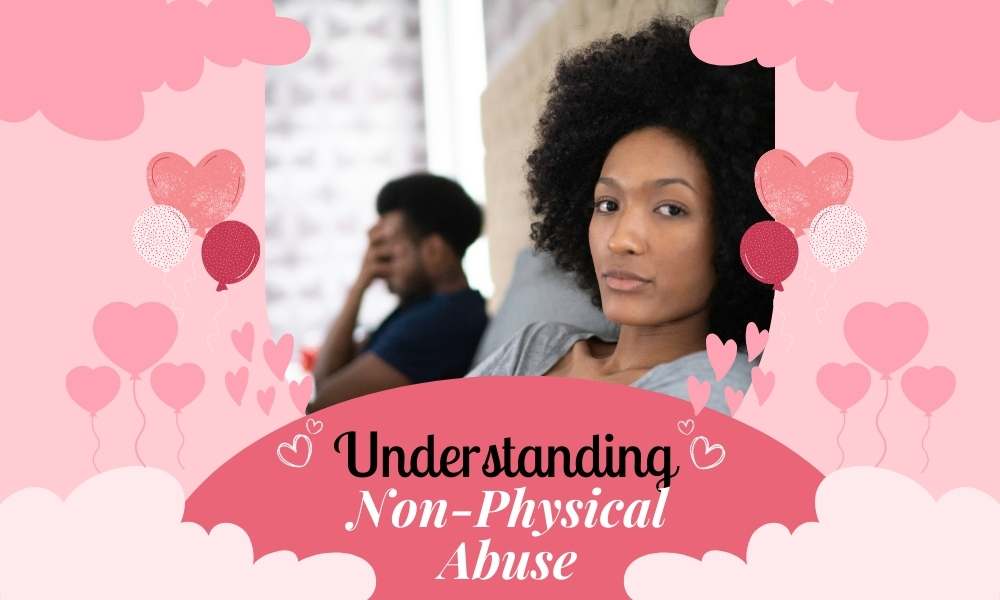The benefits of a strong parental relationship extend far beyond the child’s formative years. Studies show that children of happily married parents are less likely to experience behavioural problems, depression, or substance abuse later in life. This is because a loving, supportive home provides the foundation for a child to thrive and develop into a confident, well-adjusted adult.

Conversely, the absence of a stable family structure can harm a child’s growth and outlook. Without the safety net of a nurturing parental bond, kids struggle to form meaningful relationships and make poor choices that undermine their future success. That’s why investing in a healthy marriage is one of the greatest gifts parents can give their children.
Investing in a healthy marriage is one of the greatest gifts parents can give their children
1. Emotional security and a sense of belonging
Children have an innate need for emotional stability and a strong sense of belonging. This is crucial for their healthy development and overall well-being. When children feel secure, loved, and supported within their family unit, they are far more likely to thrive.
Conversely, disruptions to family unity, such as divorce, can have the opposite effect. The loss of a parent, financial instability, and the stress of adapting to a new living situation can leave lasting scars. Children require the constancy of a loving home environment to feel safe, valued, and able to grow into confident, well-adjusted individuals.

2. Better physical and mental health outcomes
The mental health benefits of growing up in an intact family cannot be overstated. Numerous studies have shown that children of married parents enjoy better outcomes than those from divorced or single-parent households. For instance, children raised by married parents are less likely to struggle with issues like depression, behavioural problems, and substance abuse.
On the contrary, divorce can have devastating effects of divorce on children. They can face a higher risk of obesity, asthma, and other chronic conditions.
Ultimately, the data is clear: marriage and family stability profoundly impact child well-being across multiple dimensions. Policymakers and community leaders would be wise to enact measures that strengthen and support the institution of marriage for our nation’s youth.
3. Enhanced academic performance and educational attainment
A stable and healthy family structure is critical to a child’s educational journey. Studies have shown that children raised by married parents tend to perform better academically and achieve higher educational attainment than their peers from other family structures.

This includes a high likelihood of graduating high school and attending college. In contrast, the disruption caused by divorce or single parenthood can negatively impact a child’s academic performance and educational outcomes.
4. Stronger social skills and interpersonal relationships
Strong social skills and healthy interpersonal relationships are essential for personal and professional success. Children who grow up in stable, nurturing households tend to develop better communication abilities, empathy, and conflict-resolution skills. This is because they learn by observing and modelling the behaviours of their parents and caregivers.

Conversely, homes marked by frequent conflict, including divorce or the absence of a parent, can hinder a child’s social development. Children may struggle to build strong interpersonal bonds later in life without good role models.
5. Greater financial stability and opportunity
Stable two-parent households offer greater financial stability and opportunity for families. It’s no wonder that children in married, two-parent homes are less likely to experience poverty and have access to more family resources.
Conversely, children from a fragmented household can have limited prospects for intergenerational wealth and are at a higher risk of living below the poverty line.

6. Reduced Risk of Behavioral Issues and Juvenile Delinquency
What can be said of juvenile delinquency? Children of parents in healthy, low-conflict marriages exhibit fewer behavioural problems and are less likely to act out or break the law. Divorce and family instability, on the other hand, have been linked to an increased risk of juvenile crime, substance abuse, and other troubling behaviours in youth.
Maintaining a strong family unit provides children with a sense of security, belonging, and guidance not present in fractured households. Parents in loving relationships model healthy conflict resolution and emotional regulation—skills children internalize. This family-based foundation helps prevent the development of antisocial tendencies in young people.

7. Modelling Healthy Relationship Dynamics
There’s no debate that Children model their parents’ behaviour. Consequently, witnessing a loving, healthy partnership can profoundly shape how they approach their own future relationships. When parents model effective communication, compromise, and conflict resolution, they equip their children with the skills to build fulfilling connections.
This is hardly the case in conflict-prone homes. Children who grow up seeing unhealthy relationship dynamics may struggle to form stable, satisfying bonds as adults. By prioritizing a marriage built on mutual respect, trust, and care, parents provide an invaluable blueprint for their children’s relationship success.

8. Increased Resilience and Ability to Cope with Adversity
Children of married parents demonstrate greater resilience and an enhanced ability to cope with life’s challenges. An intact family unit’s stability equips young people with the essential skills to navigate adversity.
Studies consistently indicate that children raised by married parents exhibit more adaptable behaviours and an increased capacity to manage stress. This is in stark contrast to the heightened emotional turmoil often experienced by divorced children.
Conclusion
Investing in your marriage is one of the most impactful ways to secure a brighter future for your children. A healthy, united family gives children the stability, support, and role models they need to thrive. By prioritizing your relationship with your spouse, you invest long-term in your children’s well-being.
The bottom line is this: A stable, loving family creates a family dynamic that gives your children the solid foundation they need to succeed. Your marriage is the bedrock upon which your children’s future is built, so treat it as the valuable asset it is.

Worried about the lifelong impact of your divorce on your child? Trapped in a cycle of conflict with your co-parent? Desperate to create a healthy, happy future for your family?
This book is your lifeline.
Packed with easy-to-follow, actionable advice, it’s your roadmap to minimizing the trauma of divorce for your children. Learn how to:
- Become your child’s champion: Make informed choices safeguarding their long-term well-being.
- Forge a united front: Co-parent effectively, even amidst conflict, for the sake of your children.
- Create a safe haven: Protect your children from the emotional fallout of divorce.
- Break the communication barrier: Learn proven techniques for productive co-parenting conversations.
- Let go of the past: Heal old wounds and build a love-filled future for your family.
Backed by experts and praised by parents like you, this is the essential guide to navigating divorce with your child’s best interests at heart.
Don’t leave your child’s future to chance. Get your copy today and start building a brighter tomorrow.



 One common technique for penis stretching is manual stretching. This involves applying gentle pressure and tension to the penis to increase its length. Some people may also incorporate jelqing into their stretching routine. Jelqing involves using a hand-over-hand motion to milk the penis to increase blood flow and promote tissue growth. Additionally, therapy for
One common technique for penis stretching is manual stretching. This involves applying gentle pressure and tension to the penis to increase its length. Some people may also incorporate jelqing into their stretching routine. Jelqing involves using a hand-over-hand motion to milk the penis to increase blood flow and promote tissue growth. Additionally, therapy for  The importance of penile muscle strength for sexual health and function cannot be overstated. Strong penile muscles play a crucial role in supporting erectile function, enhancing sexual performance, and maintaining overall sexual health. These muscles, collectively known as the pelvic floor muscles, are responsible for controlling erection, ejaculation, and urination. When these muscles are weak or dysfunctional, it can lead to various sexual problems, such as erectile dysfunction, premature ejaculation, or reduced sexual satisfaction. Therefore, understanding the significance of penile muscle strength and taking steps to maintain and improve it is
The importance of penile muscle strength for sexual health and function cannot be overstated. Strong penile muscles play a crucial role in supporting erectile function, enhancing sexual performance, and maintaining overall sexual health. These muscles, collectively known as the pelvic floor muscles, are responsible for controlling erection, ejaculation, and urination. When these muscles are weak or dysfunctional, it can lead to various sexual problems, such as erectile dysfunction, premature ejaculation, or reduced sexual satisfaction. Therefore, understanding the significance of penile muscle strength and taking steps to maintain and improve it is  On the other hand, skeletal muscles play a crucial role in penile stretching and traction exercises. These exercises aim to lengthen and strengthen the penile tissues by gently pulling and exerting tension on the ligaments and muscles. By doing so, these exercises put the penile muscles and tissues under controlled stress, encouraging the growth and development of new cells, ultimately leading to increased penile length and girth. Daily exercises such as pelvic floor muscle exercises and Pilates exercises can be beneficial.
On the other hand, skeletal muscles play a crucial role in penile stretching and traction exercises. These exercises aim to lengthen and strengthen the penile tissues by gently pulling and exerting tension on the ligaments and muscles. By doing so, these exercises put the penile muscles and tissues under controlled stress, encouraging the growth and development of new cells, ultimately leading to increased penile length and girth. Daily exercises such as pelvic floor muscle exercises and Pilates exercises can be beneficial. One such group of muscles is the bulbocavernosus muscle. Located in the perineum, this muscle surrounds the base of the penis and contracts rhythmically during ejaculation. Contraction of the bulbocavernosus muscle helps propel semen through the urethra during ejaculation.
One such group of muscles is the bulbocavernosus muscle. Located in the perineum, this muscle surrounds the base of the penis and contracts rhythmically during ejaculation. Contraction of the bulbocavernosus muscle helps propel semen through the urethra during ejaculation. This discussion aims to explore the role that various muscles play in contributing to erectile function. The process of achieving and maintaining an erection involves a complex interplay of both voluntary and involuntary muscle contractions. Understanding how these muscles work together is crucial to comprehending the physiological mechanisms behind erectile function. By delving into the anatomy and function of these muscles, we can gain insights into the intricate processes that allow for successful sexual performance.
This discussion aims to explore the role that various muscles play in contributing to erectile function. The process of achieving and maintaining an erection involves a complex interplay of both voluntary and involuntary muscle contractions. Understanding how these muscles work together is crucial to comprehending the physiological mechanisms behind erectile function. By delving into the anatomy and function of these muscles, we can gain insights into the intricate processes that allow for successful sexual performance. One effective way to strengthen the pelvic floor muscles, including the penile muscles, is through Kegel exercises. These exercises involve contracting and relaxing the pelvic floor muscles in a controlled manner. By regularly performing Kegel exercises, men can improve the strength and control of their penile muscles, which can help delay ejaculation and achieve better orgasmic control.
One effective way to strengthen the pelvic floor muscles, including the penile muscles, is through Kegel exercises. These exercises involve contracting and relaxing the pelvic floor muscles in a controlled manner. By regularly performing Kegel exercises, men can improve the strength and control of their penile muscles, which can help delay ejaculation and achieve better orgasmic control. The physiological process of blood flow during an erection involves a complex interplay of various factors. It starts with a signal from the brain, usually due to sexual stimulation or arousal. This signal triggers the release of nitric oxide, a chemical messenger, which causes the penile muscles to relax. When the penile muscles relax, the blood vessels within the penis expand, allowing for increased blood flow.
The physiological process of blood flow during an erection involves a complex interplay of various factors. It starts with a signal from the brain, usually due to sexual stimulation or arousal. This signal triggers the release of nitric oxide, a chemical messenger, which causes the penile muscles to relax. When the penile muscles relax, the blood vessels within the penis expand, allowing for increased blood flow.




































